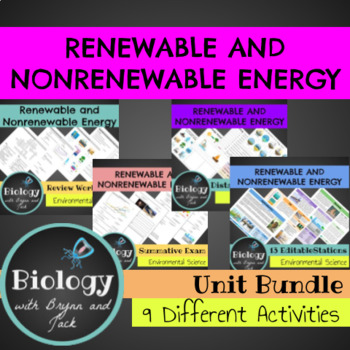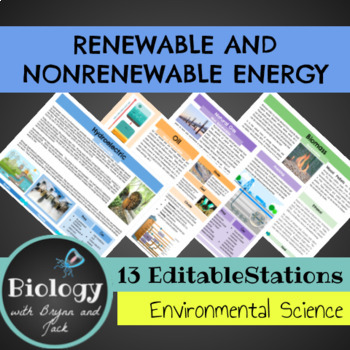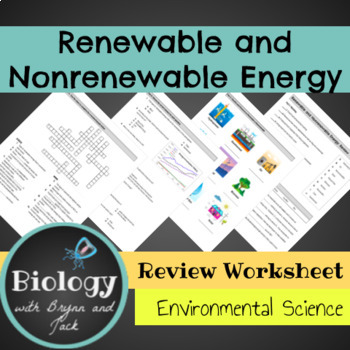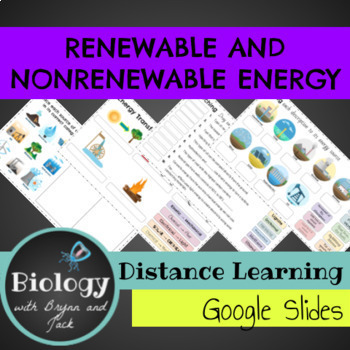Renewable and Nonrenewable Energy: Bundle
Biology with Brynn and Jack
954 Followers
Grade Levels
9th - 12th
Subjects
Resource Type
Standards
NGSSHS-LS2-7
NGSSHS-LS2-4
NGSSHS-ESS3-6
Formats Included
- Zip
Biology with Brynn and Jack
954 Followers

Includes Google Apps™
This bundle contains one or more resources with Google apps (e.g. docs, slides, etc.).
Products in this Bundle (9)
showing 1-5 of 9 products
Description
This resource includes everything to get you started with a unit about renewable and nonrenewable energy. It has bellringers, lectures, readings, reviews, online practice, and assessments. Check out each product below for more information!
Each product is editable so you can differentiate it to fit your classroom needs.
Total Pages
Answer Key
Included
Teaching Duration
N/A
Report this resource to TPT
Reported resources will be reviewed by our team. Report this resource to let us know if this resource violates TPT’s content guidelines.
Standards
to see state-specific standards (only available in the US).
NGSSHS-LS2-7
Design, evaluate, and refine a solution for reducing the impacts of human activities on the environment and biodiversity. Examples of human activities can include urbanization, building dams, and dissemination of invasive species.
NGSSHS-LS2-4
Use mathematical representations to support claims for the cycling of matter and flow of energy among organisms in an ecosystem. Emphasis is on using a mathematical model of stored energy in biomass to describe the transfer of energy from one trophic level to another and that matter and energy are conserved as matter cycles and energy flows through ecosystems. Emphasis is on atoms and molecules such as carbon, oxygen, hydrogen and nitrogen being conserved as they move through an ecosystem. Assessment is limited to proportional reasoning to describe the cycling of matter and flow of energy.
NGSSHS-ESS3-6
Use a computational representation to illustrate the relationships among Earth systems and how those relationships are being modified due to human activity. Examples of Earth systems to be considered are the hydrosphere, atmosphere, cryosphere, geosphere, and/or biosphere. An example of the far-reaching impacts from a human activity is how an increase in atmospheric carbon dioxide results in an increase in photosynthetic biomass on land and an increase in ocean acidification, with resulting impacts on sea organism health and marine populations. Assessment does not include running computational representations but is limited to using the published results of scientific computational models.





